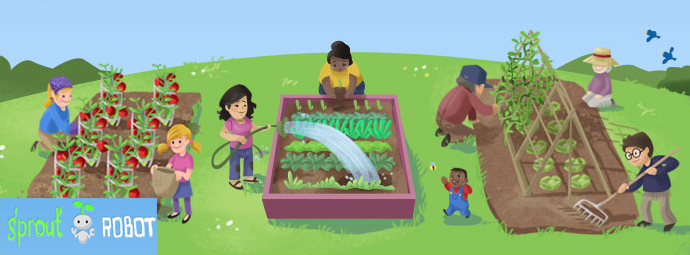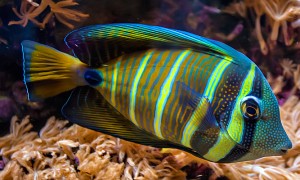There’s no doubt about it: Backyard farming is now a bona fide trend. Even if it’s only a few herbs and cherry tomatoes in a pot, more and more area residents have embraced the idea that it’s not only possible but also beneficial to grow their own food. A big part of this trend is “aquaponics,” or an ecosystem that combines agriculture with the raising of fish or aquatic life. It’s a relative newcomer in this country, but it’s increasingly popular.
Aquaponics: A New Way Toward Edible Landscaping
In the Dallas-Fort Worth Metroplex, resident gardeners explore available options, including alternatives to planting in the dirt. Aquaponics is one of the more interesting new methods of “farming.” Popularly known as “fish farming,” this symbiotic, closed-loop method fosters a natural mini-ecosystem whereby fish and plants each nourish the other. The fish are kept in a tank, and the plants sit over a separated tank with roots hanging down. The water from the fish tank is filtered to the plant tank, where roots convert fish waste products into nutrients — just as fertilizer spread on soil nourishes traditional crops. No additional nutrients are necessary, and produce thrives in the watery environment.
This emerging science is only now becoming mainstream in the United States. While commercial aquaponics facilities exist in Houston and Austin, none yet have been established in the Metroplex. Many backyard aquaponics systems are in operation, however, throughout numerous communities in the North Texas area. They allow area residents to harvest their own salad greens, tomatoes, cucumbers, beans, squash, peppers, and herbs from their growbeds. Almost any fish will serve the needs of the system. Tilapia and catfish are popular in Texas, but goldfish work just as well for those interested only in producing vegetables.
The national Aquaponics Association, founded in Colorado, is a young organization dedicated to educating about the benefits of this food-growing system. There are many online sources available for residents to learn the basics of aquaponic gardening, and local seminars and workshops are offered regularly for interested do-it-yourselfers.
Backyard Farming: Future Trend?
Aside from fish-farming, Dallas-area residents have other options for growing a portion of their own food — within certain limits. Urban goat or pig farming, for example, only works for residents who own acreages in outlying communities, although some city communities’ zoning codes allow residents to keep chickens (but not roosters!).
It is possible, though, to grow almost any crop you desire within a fenced backyard. City officials in Farmers Branch, perhaps because of the city’s proud agricultural tradition, noted that residents can grow anything they want in their backyards. The only requirement is that the yard not be allowed to look “unkempt.”
One popular option is the community garden. A number of subdivisions, as well as local organizations and churches, have established plots of land for residents to cultivate their choice of food crops. The Farmers Branch Community Garden between a Farmers Branch and local church allows gardeners to take what they need of their individual harvest, but also encourages donations to a local agency to help feed the needy. Richardson, another nearby suburb, also has such alliances to promote local garden plots.
Teaching the Children
Educating students about the food supply is also a priority for public and private schools in the Metroplex. A number of elementary schools maintain school gardens so that the youngsters can experience food from seed to table. Aquaponics curriculum development is also underway, and area high schools have expressed interest in aquaponic systems; some maintain greenhouses in order to introduce students to modern farming techniques.
Image Source: Flickr
[cf]skyword_tracking_tag[/cf]







[…] Backyard Aquaponics and Other Ways to Grow Your Own Food […]
Looking great work dear, I really appreciated to you on this quality work. Nice post!!